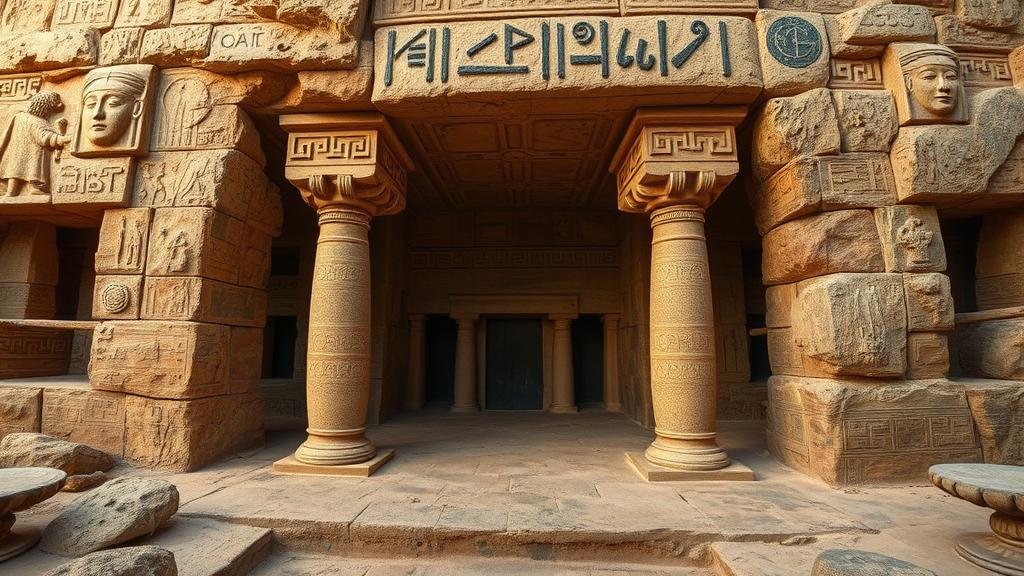Discovering the “Vault of Forgotten Dreams,†said to preserve the ambitions of ancient rulers.
Discovering the “Vault of Forgotten Dreamsâ€
Deep within the arid expanse of the Egyptian desert, an archaeological wonder has begun to capture the imagination of historians and adventurers alike. Dubbed the “Vault of Forgotten Dreams,†this intriguing site is believed to harbor the ambitions and aspirations of ancient rulers. As researchers delve deeper into the vault’s mysteries, they are unearthing a treasure trove of insights about human desires that transcend the constraints of time. This article explores the origins, significance, and implications of this fascinating discovery.
The Origins of the Vault
Archaeologists believe the Vault of Forgotten Dreams may date back to the Fifth Dynasty of ancient Egypt, around 2500 BC. This period was marked by a shift towards monumental architecture and elaborate burial practices, which aimed to secure a rulers legacy in the afterlife. The site is located near the ancient city of Memphis, which served as a political and cultural hub during the Old Kingdom.
Excavators uncovered the vault in early 2023 after a series of sandstorm-induced collapses exposed hidden chambers buried for millennia. Initial surveys revealed intricately carved stonework and hieroglyphs that depict the aspirations of rulers, including ambitious construction projects, military conquests, and spiritual quests aimed at maintaining Ma’at, the ancient Egyptian concept of truth and order.
A Window into Ancient Aspirations
The most striking feature of the vault is a collection of artifacts that encapsulate the dreams and ambitions of its ancient inhabitants. These include:
- Inscribed Tablets: Stone tablets featuring detailed accounts of ambitious plans, including the construction of monuments and temples.
- Miniature Models: Small-scale representations of various architectural projects, providing insight into ancient engineering techniques.
- Mummified Remains: Remains believed to belong to architects and advisors, suggesting the depth of loyalty towards royal visions.
These findings have profound implications for understanding the governance and social hierarchy of ancient Egypt. For example, the governance structure of that era appears to have been centered around collaborative efforts, with skilled laborers, architects, and rulers aligning their aspirations toward monumental accomplishments.
The Role of Symbols and Hieroglyphs
Significantly, the hieroglyphs within the vault convey symbolic meanings that resonate with modern human experiences. An example is the repeated depiction of the ankh, symbolizing life and immortality, which underscores the desire of ancient rulers to be remembered through their monumental legacies. The images also frequently feature the scarab beetle, representing rebirth and transformation, highlighting aspirations that go beyond mere survival to transcendental aspirations.
Researchers have compared these symbols to modern corporate logos and branding, illustrating that ancient rulers sought to cultivate a lasting identity, akin to how today’s corporations build a brand identity that endures through time.
Exploring Historical Contexts
The Vault of Forgotten Dreams not only sheds light on the aspirations of ancient Egyptian rulers but also places these desires within a broader historical context. For example, the dreams of rulers during the Fifth Dynasty can be contrasted with those from the Third Dynasty, particularly the building of the Step Pyramid at Saqqara under the reign of Djoser.
Historical records indicate that rulers during the Fifth Dynasty faced unique challenges, such as dwindling resources and increasing power struggles among nobility, which may have amplified their ambitions to create enduring legacies. Vault encapsulates a spectrum of human aspirations in times of challenge, illustrating a universal truth: the pursuit of dreams often emerges strongest amidst adversity.
Real-World Applications and Takeaways
The lessons from the “Vault of Forgotten Dreams†extend beyond the archaeological realm and resonate in today’s world:
- Importance of Legacy: Just as ancient rulers prioritized their legacies, modern leaders in any sphere can reflect on the impact of their initiatives and how they will be remembered.
- Collaboration for Aspirations: The ancient practices underscore the value of teamwork in achieving collective goals, a principle applicable in business and community endeavors today.
- Resilience in Adversity: The dreams encapsulated in the vault demonstrate that ambition can thrive in challenging circumstances, encouraging individuals to maintain hope and ambition regardless of obstacles.
In summation, the “Vault of Forgotten Dreams†serves as a poignant reminder of the timeless human spirit and its intrinsic motivation to aspire for greatness. As archaeologists continue to uncover its treasures, the vault stands as a testament to the ambitions that once drove an entire civilization, and which continue to inspire us to this day.



